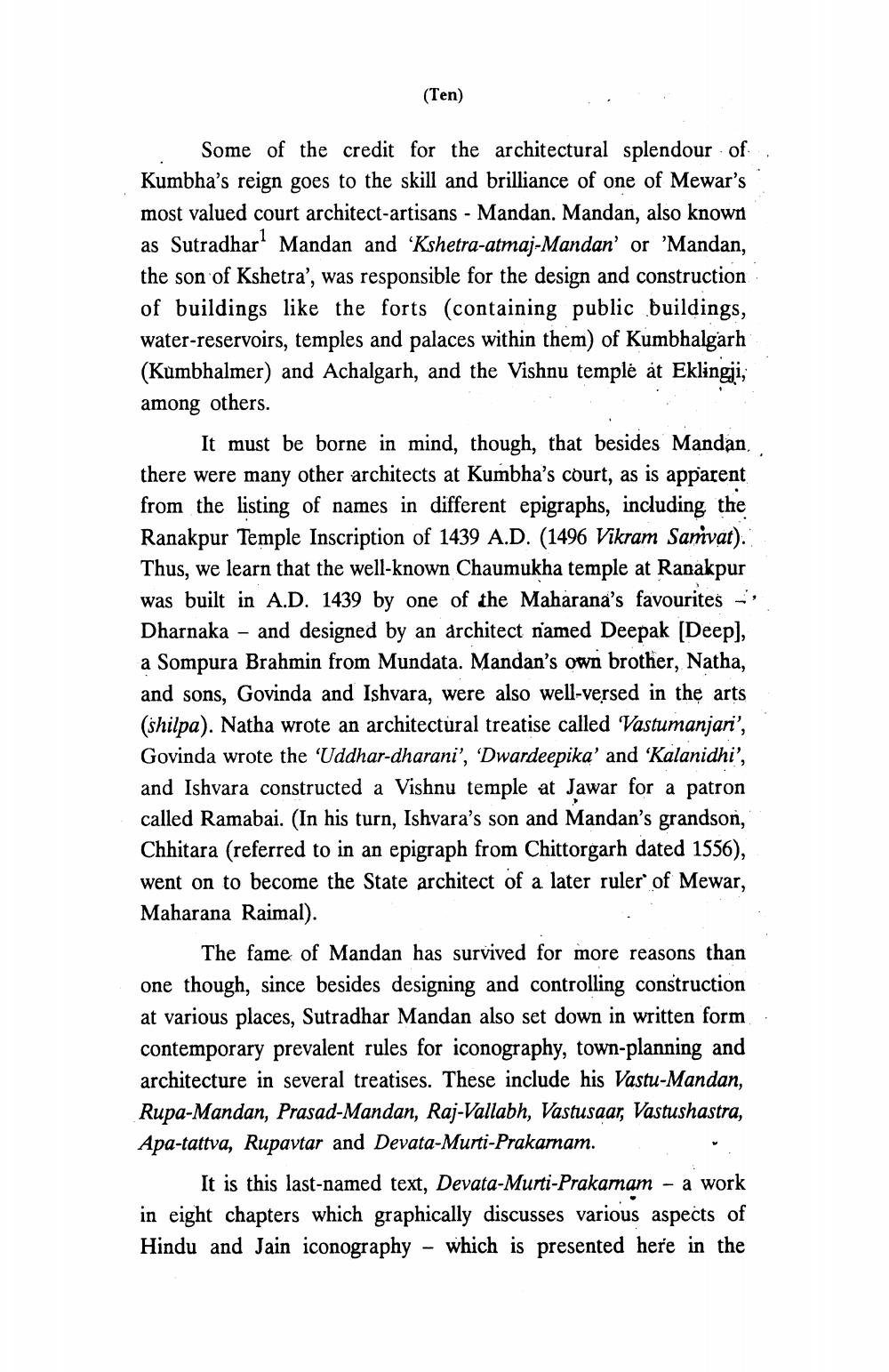________________
(Ten)
Some of the credit for the architectural splendour of Kumbha's reign goes to the skill and brilliance of one of Mewar's most valued court architect-artisans - Mandan. Mandan, also known as Sutradhar1 Mandan and Kshetra-atmaj-Mandan' or 'Mandan, the son of Kshetra', was responsible for the design and construction of buildings like the forts (containing public buildings, water-reservoirs, temples and palaces within them) of Kumbhalgarh (Kumbhalmer) and Achalgarh, and the Vishnu temple at Eklingji, among others.
It must be borne in mind, though, that besides Mandan there were many other architects at Kumbha's court, as is apparent from the listing of names in different epigraphs, including the Ranakpur Temple Inscription of 1439 A.D. (1496 Vikram Samvat). Thus, we learn that the well-known Chaumukha temple at Ranakpur was built in A.D. 1439 by one of the Maharana's favourites - Dharnaka and designed by an architect named Deepak [Deep], a Sompura Brahmin from Mundata. Mandan's own brother, Natha, and sons, Govinda and Ishvara, were also well-versed in the arts (shilpa). Natha wrote an architectural treatise called Vastumanjari', Govinda wrote the 'Uddhar-dharani', 'Dwardeepika' and 'Kalanidhi', and Ishvara constructed a Vishnu temple at Jawar for a patron called Ramabai. (In his turn, Ishvara's son and Mandan's grandson, Chhitara (referred to in an epigraph from Chittorgarh dated 1556), went on to become the State architect of a later ruler of Mewar, Maharana Raimal).
The fame of Mandan has survived for more reasons than one though, since besides designing and controlling construction at various places, Sutradhar Mandan also set down in written form contemporary prevalent rules for iconography, town-planning and architecture in several treatises. These include his Vastu-Mandan, Rupa-Mandan, Prasad-Mandan, Raj-Vallabh, Vastusaar, Vastushastra, Apa-tattva, Rupavtar and Devata-Murti-Prakarnam.
It is this last-named text, Devata-Murti-Prakarnam - a work in eight chapters which graphically discusses various aspects of Hindu and Jain iconography - which is presented here in the




